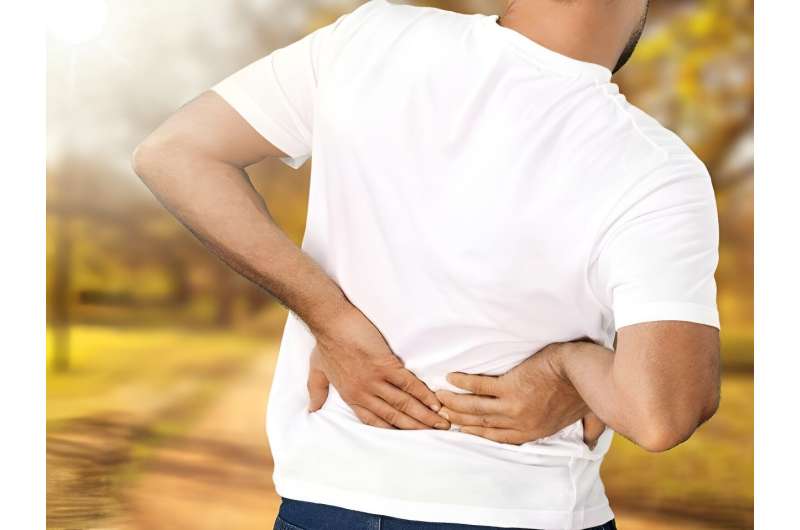This article has been reviewed according to Science X's editorial process and policies. Editors have highlighted the following attributes while ensuring the content's credibility:
fact-checked
peer-reviewed publication
reputable news agency
proofread
New clues to origins of lower back pain

Some people might be prone to low back pain because of specific cells contained in their spinal disks, a new study suggests.
The research could explain why only certain people develop back pain due to the degeneration of their spinal disks, which are jelly-filled spacers that act as shock absorbers between the small bones of the vertebrae.
"We've identified for the first time particular cells that could be the key to understanding disk pain," said senior study author Dmitriy Sheyn, a research scientist in the Board of Governors Regenerative Medicine Institute at Cedars-Sinai Medical Center in Los Angeles.
"Learning more about how these cells work could lead to the eventual discovery of new treatment options," Sheyn added in a Cedars Sinai news release.
About 40% of adults experience low back pain due to degenerating disks in the spine, but up to now it's not been clear exactly why the disks become painful.
The jelly in spinal disks tends to dry out and degenerate as people age, but that doesn't automatically trigger back pain, the researchers noted.
"This is because the inner jelly-like layers of the disks contain no nerve endings," Sheyn said. "But sometimes, when disks degenerate, nerve endings from the surrounding tissues invade the disk, and we believe this causes pain."
For this study, researchers first compared spinal disks from patients with low back pain against healthy disks from pain-free folks.
They found that patients experiencing low back pain had disks containing greater numbers of a certain type of cell that might be associated with their pain.
Researchers then subjected healthy disk cells to conditions that simulated disk degeneration—inflammation, acidity, tension, compression—and found that the cells could indeed transform into the type associated with pain.
In a final lab experiment, the researchers placed pain-associated spinal disk cells next to pain-signaling neurons they had created from stem cells.
The pain-signaling neurons started to grow nerve fibers toward the cells associated with back pain, researchers found. These fibers could be used to transmit pain signals from spinal disks to the brain.
However, the pain-signaling neurons made no attempt to grow these nerve fibers when placed next to healthy spinal disk cells.
"We don't know whether the pain-associated cells attracted the invasion of the neurons or the healthy cells repelled it, but there was definitely a difference between the healthy and the pain-associated cells," Sheyn said.
These findings, published recently in the journal Science Translational Medicine, open the possibility for new treatments that might reprogram pain-related disk cells back into healthy cells, the researchers said.
Adding healthy cells to painful disks might also prove a promising therapy if the healthy cells are able to overwhelm pain-associated cells.
"Unveiling the key cells behind disk-related pain marks a pivotal stride in reshaping how we approach back pain management," said Dr. Mark Vrahas, chair of Cedars-Sinai Orthopaedics. "This discovery opens doors to targeted therapies that may revolutionize orthopedic treatments, offering hope to millions worldwide."
More information: Johns Hopkins Medicine has more about degenerative disk disease.
Copyright © 2024 HealthDay. All rights reserved.




















